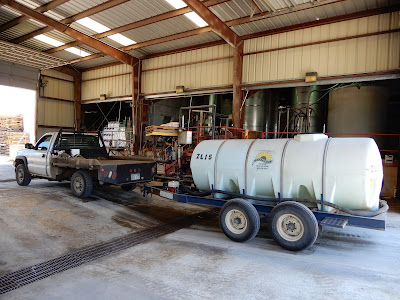Thankfully, most of its buddies ended up in the ground.
It's corn planting time in Kansas. In the scheme of things, our farm is kind of like that single grain on the kitchen floor. The 294 acres we planted this spring on our dryland farm don't amount to much in the overall statistics of production for Kansas.
However, only five states produced more corn than Kansas in 2020. USDA estimated the 2020 Kansas Corn Crop at 766 million bushels, with a yield of 134 bushels per acre and 5.72 million acres harvested. Last year's crop was the second largest in Kansas history, falling only to the record 2019 crop of 801 million bushels.
According to the Kansas Corn Commission, a third of our corn stays in Kansas to feed livestock; a third is made into ethanol and dried distillers grain at Kansas ethanol plants; and a third of our corn leaves Kansas to be used in other states or exported overseas, along with corn products.
Since
our primary crop is wheat, we don't contribute much to that total. For us, corn is one of the crops used in our rotational
program to keep soil quality good and weeds down. For my brother and parents in a neighboring county, corn is a primary crop.
We began planting corn on April 26, a little later than our normal plant date. However, in mid-April, we had fairly chilly weather, so the soil temperature wasn't conducive for growing anyway. Plus, we had some cattle-moving tasks to complete first. (And, it allowed a visit with the granddaughters before we began the new task - bonus!)
Today, many farmers plant RIB corn (refuge in a bag) - whether it's irrigated or dryland.
The green-colored seeds have a different genetic make-up and are treated with a different insecticide than the purple-colored seeds. The purple seeds are a refuge for several different insects in a field, giving them a habitat to satisfy EPA rules. Before RIB technology was available, farmers had to plant so many acres in a field to a corn that wasn't resistant to the bugs and the rest of the field could be resistant. With RIB technology, farmers can plant it all at the same time, without changing seed and figuring acreage requirements.He also applies a starter fertilizer to promote early growth. The make-up of the starter fertilizer was determined after Randy did soil testing before planting.


I stand around and take photos of our prairie skyscrapers and the clouds. (What else is new?)
This year, we again picked up the seed as we need it at Zenith, so on some trips, we also get the bagged seed from another building.
Once back to the field, Randy can then use the fertilizer in the trailer to refill the fertilizer tanks on the planter, attaching a hose.
As always, we're "keepin'" it rural, just like our ancestors did.
















Interesting to see that both Randy and Lynda's husband are sitting in their tractors with big sowing jobs ahead.
ReplyDeleteI'm always amazed at the similarities - even a world away - though the seasons are opposites.
Delete